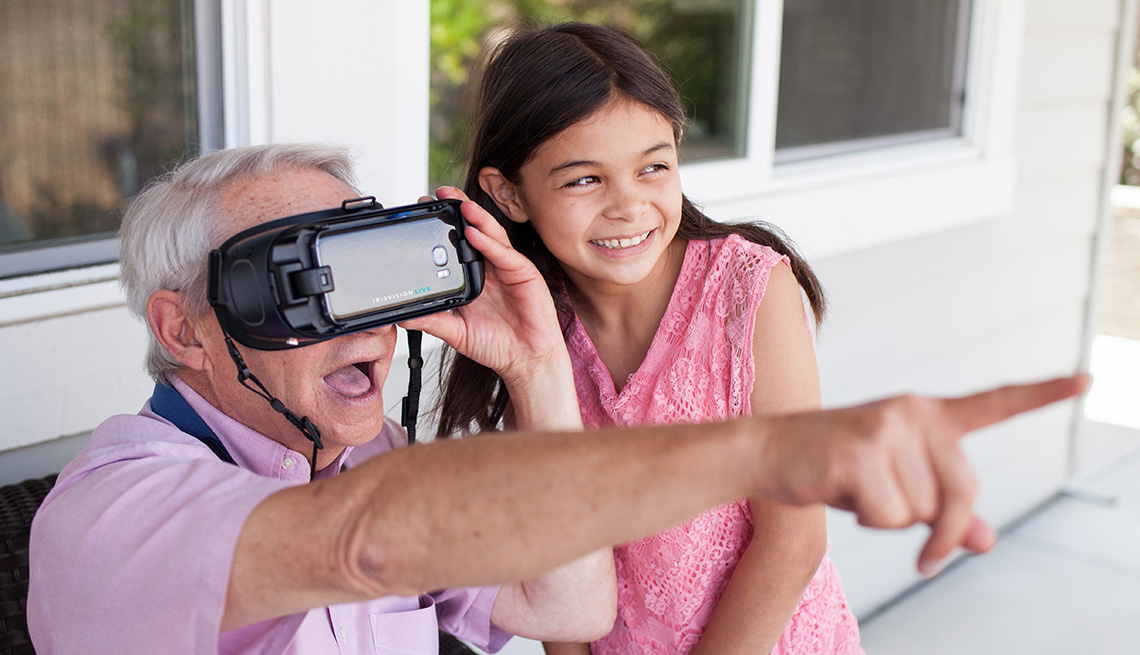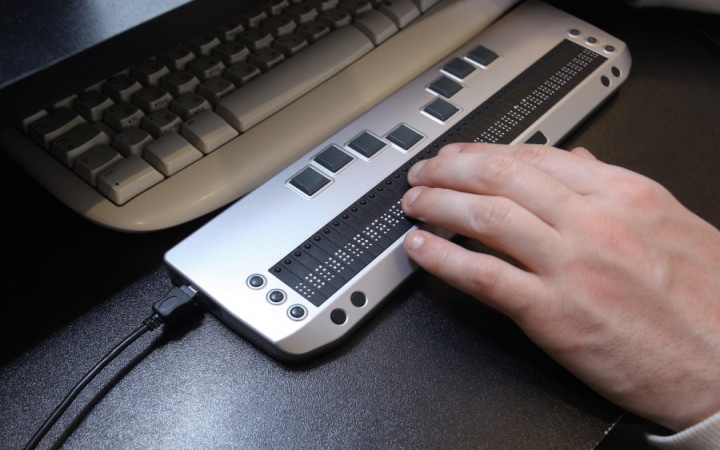AI-Powered Visual Aids: Enhancing Self-Reliance for Blind Users
AI-Powered Visual Aids: Enhancing Self-Reliance for Blind Users
Blog Article
Empowering Independence With Assistive Technology for the Blind
The combination of assistive technology into the lives of people with visual problems stands for a substantial improvement in advertising self-reliance and self-sufficiency. From cutting-edge screen readers to advanced wise walking sticks, these tools not just boost daily navigation and interaction however likewise equip individuals to engage meaningfully in various facets of life. As we check out the myriad benefits and real-world applications of these technologies, it ends up being vital to take a look at the hidden variables that add to their efficiency and the possibility for future advancements in this important area.
Review of Assistive Modern Technology

The development of assistive innovation is based in concepts of inclusivity and empowerment. Developments in software program, hardware, and sensory enhancements provide individuals with choices customized to their particular needs. From display readers that convert message to speech, to tactile tools that convey information with touch, these devices transform the way individuals engage with their surroundings.
Along with sensible applications, assistive modern technology fosters greater social incorporation and participation in numerous fields, consisting of education and employment (Screen readers for the blind). As r & d remain to evolve, the potential for assistive modern technology to better enhance the lives of visually damaged people continues to be promising, leading the way for a more equitable culture where everyone can thrive
Sorts Of Assistive Gadgets
A range of assistive tools have actually emerged to support people with visual problems, each made to meet particular demands and enhance everyday functioning. These gadgets range from low-tech services to sophisticated technologies, offering diverse options for individuals.
Low-tech devices consist of magnifiers and large-print materials that assist in analysis and writing. Braille tools, such as Braille styluses and slates, make it possible for tactile reading and communication. Positioning and movement help, like white walking sticks, aid customers navigate their environment securely.
On the higher end of the spectrum, electronic magnification systems and screen readers provide substantial assistance. Electronic magnifiers allow users to increase the size of text and pictures on displays, while display viewers convert electronic web content right into manufactured speech, helping with access to info on smartphones and computer systems.
Smart device applications also play a critical role, giving functions like message recognition and navigation help. Wearable technology, such as smart glasses furnished with enhanced reality, is becoming an appealing tool to enhance situational understanding.
Advantages of Assistive Technology
The integration of assistive technology dramatically improves the lifestyle for individuals with aesthetic impairments. These technologies empower customers by advertising freedom, enabling them to navigate their settings much more successfully and perform day-to-day jobs with better convenience. As an example, display readers and magnification software application enable individuals to gain access to electronic info, cultivating specialist and educational chances that may have previously been out of reach.
Furthermore, assistive gadgets such as clever walking sticks and general practitioners applications provide real-time navigating aid, improving wheelchair and security. This increased freedom not only enhances self-esteem but additionally motivates social involvement, allowing individuals to take part even more fully in their communities.
Assistive modern technology also facilitates interaction, assisting customers connect with others via voice recognition and text-to-speech applications. This ability is important for maintaining partnerships and accessing important details.
Additionally, the customization options readily available with numerous assistive innovations make certain that individuals can tailor tools to their certain demands, additionally enhancing usability and effectiveness. In general, the advantages of assistive technology for individuals with aesthetic problems are extensive, advertising an extra comprehensive culture where everybody can seek their goals and objectives.
Case Researches and Success Stories
Highlighting the transformative impact of assistive innovation, various instance research studies show just how individuals with aesthetic impairments have see here now actually efficiently integrated these devices right into their every day lives. One engaging example includes an university trainee that used display reading software program to browse scholastic products and on-line resources properly. This innovation not only facilitated her education and learning yet additionally boosted her confidence in joining discussions and team projects.
Another study features an expert that employs a smart device application created for navigation and object recognition. By utilizing this application, he has regained freedom in both his personal and workplace, permitting him to commute individually and engage with associates extra effectively.
In addition, a retired person shared her experience with braille e-readers, which allowed her to access a vast array of literary works and remain gotten in touch with her neighborhood via publication clubs.
These success stories underscore the critical function of assistive modern technology in cultivating self-reliance, enhancing lifestyle, and advertising social combination for people with visual disabilities (Smart glasses for the visually impaired). By accepting these cutting-edge tools, users can get over difficulties and seize chances that contribute to their personal and expert fulfillment

Future Patterns in Assistive Technology
Development in assistive innovation is poised to redefine the landscape of support for individuals with visual disabilities. Arising patterns stress the integration of expert system (AI) and artificial intelligence, which boost the performance of tools that aid with navigation and details access. As an example, AI-driven applications are currently efficient in translating visual data in real-time, making it possible for customers to involve with their atmosphere a lot more separately.
In addition, the development of wearable modern technology is progressing rapidly. Smart glasses outfitted with augmented truth (AR) can provide Read Full Report audio descriptions of environments, changing just how customers engage with public spaces. These devices not only advertise autonomy yet additionally foster social incorporation.
In Addition, the Internet of Things (IoT) is making homes smarter, permitting seamless connectivity between assistive devices and daily appliances. This connectivity encourages customers by making it possible for automated feedbacks and voice-activated controls customized to specific needs.
Final Thought
To conclude, assistive innovation plays an essential duty in encouraging people with visual impairments by enhancing their independence and involvement with their environments. The diverse series of gadgets and applications readily available not only promotes navigation and communication but likewise promotes social combination and chances for personal and expert growth. As advancements continue in this area, the potential for improving the top quality of life for those with visual disabilities will increase, promoting greater autonomy and empowerment.

Report this page